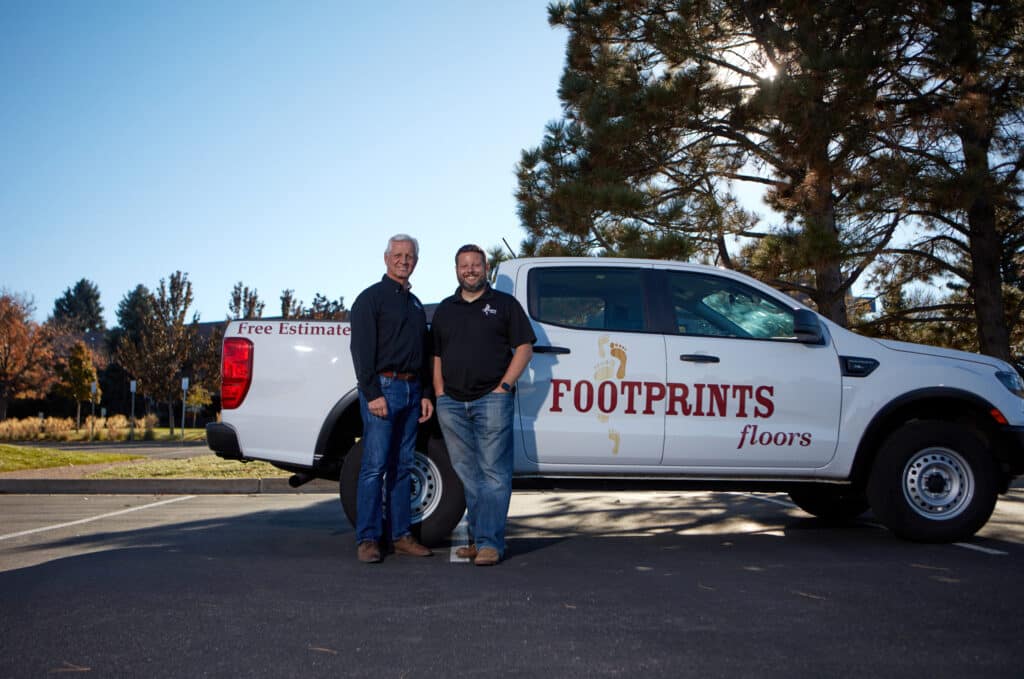How to Fund Your New Franchise

While the overall business environment seems to be slowing down, franchising is growing. 17,000 new franchise establishments are expected to open their doors by the end of the year. As the recent boom continues, franchise brands are looking forward to an expected growth rate of 5.7% for 2022, which exceeds pre-pandemic levels.
One reason why franchises are gaining momentum is because they’re often viewed as safer investments for lenders, regardless of the economic environment. This becomes especially important during economic downturns, when independent small businesses begin to fail in fairly significant numbers.
But just because it can be easier to secure funding for a (quality) franchising opportunity, doesn’t mean the process is seamless. And since each of the common financing options comes with its own set of considerations and drawbacks, it’s important to weigh those factors against their benefits to plot the most strategic path forward.
Before you dive into the particular financing options available to fund your franchise investment, you need to understand what you can afford, and what level of risk you’re willing to take on.
One of the most unpleasant situations our team of franchise recruiters can face is speaking with a candidate who has already mentally committed to becoming a franchise owner of a particular brand, only to realize that they don’t qualify because they don’t meet the minimum financial requirements.
That’s why you should expect initial conversations with franchisors to begin with one or both of the following questions:
- What is your net worth?
- How much liquid capital do you have?
Not only is it important to pursue franchise business opportunities that you can afford, but it also makes a positive first impression with franchisors when you join them for a call or meeting prepared to talk numbers.
There’s a quick formula we use when assessing available capital for a franchise investment:
1. Calculate Liquid Assets:
- Cash
- Stock
- Cryptocurrencies
- Bonds
- 401K or other retirement accounts
- Accounts Receivable or other monies due
2. Determine Liquid Injection
One of the most overlooked aspects of a successful business is just how much money is needed to get off on a good foot. In fact, almost 60% of new businesses fail because they run out of cash or encounter cost-related issues.
In the world of franchising, this seems to ring true. Specifically, I see that oftentimes franchise candidates are undercapitalized as they launch their business, because they have built their budget and proformas with the low-end number of the investment range.
For example, if the financial investment range is $150,000 – $450,000, many candidates assume they will somehow be able to get their franchise open for the very lowest amount possible, and build their budget around a number closer to $150,000. Oftentimes they’ll cite reasons like, “Rent is a lot cheaper in (insert city)” or “I know a guy who can help me build out my first location on the cheap”. This is a dangerous strategy to take, and good franchisors simply won’t award franchises to candidates who have this mentality or strategy.
My advice is to budget for at least the true average of the overall financial investment level.
To find the average investment level, you therefore need an average of the low- and high-end numbers. You do this by first adding the two ends of the range and then dividing them by two: ($150,000 + $450,000) / 2 = $300,000.
The first thing to note is good news – from a lending standpoint, franchising has a big advantage over other small businesses. The primary reason for this is that you’ll be able to demonstrate some financial performance history. Because there are already franchise owners who can demonstrate financial success (assuming you’re looking at a quality franchise brand), you’ll likely be able to better attract financing from banks for that brand.
The thing to note is that you have options, more so than a traditional business loan. We highlight five of the most common financing options for new franchise owners below:
Option 1 – 401K Loans
A common misconception is you can’t utilize your 401K until you’re 59 years of age, or you’ll be stung with taxes and penalties. This isn’t true. You can absolutely use your 401K to fund your new franchise business.
If your retirement plan has a loan provision in place, then you can also draw capital from your 401K (or any other qualified retirement account) in order to get a loan.
Pros
- No credit checks and defaulting on the loan will not affect your credit score
- Typically, interest rates are lower than the interest rates for commercial loans
- Interest charged on the loan is paid into your account (instead of going to a third party)
Cons
- Some retirements plans are not eligible for a 401(k) loan
- The entire balance must be repaid if you lose or quit your job before fully repaying the loan (unless otherwise specified in your loan agreement)
- Administrative fees and issuance fees can be levied on top of interest rate charges
- While being used for the loan, those funds will not be earning investment income
- Not an option for those who want to run their business full-time. This option requires you keep your current job (subsequently, this doesn’t apply to semi-absentee owners)
Option 2 – SBA Loans
U.S. Small Business Administration (SBA) loans are an excellent path to franchise ownership because they exist entirely to offer an affordable financing route for new business owners. Although going through the SBA loan application can be an arduous process, SBA loans offer more affordable rates than many other business financing options.
Pros
- SBA loans have longer repayment terms, from 7 to 25 years
- Wide range in loan amounts available, from $5,000 to $5.5 million
- Some of the lowest interest rates available
- SBA 7(a) loans provide flexibility in use of funds
Cons
- Application process can be drawn out and cumbersome
- Longer timing could lead to your territory(ies) being awarded to another candidate
- Failure to properly apply can result in denials and costly setbacks
- Approval for an SBA loan does not guarantee approval from lenders
Option 3 – Rollover for Business Start-Ups (ROBS)
A Rollover for Business Startups (ROBS) are a variation of the 401(k) retirement-style loans, but have fewer strings attached.
Rollover for Business Start-Up (ROBS) is a funding option that is currently gaining popularity amongst newer franchise owners. It’s especially popular for corporate refugees interested in becoming business owners for the first time, since these individuals tend to have less capital at their disposal.
Pros
- No penalties or taxes on money withdrawals used for your business
- No debt to pay back
- More control over use of your retirement funds
- No credit checks
- Funds can be used as capital for an SBA loan
Cons
- You could lose a portion of your retirement savings if you do not reinvest to recoup what was transferred
- To ensure compliance with IRS/DOL regulations, be sure to work with a seasoned plan services provider
Option 4 – HELOC Loans
If you own real estate, then another option available to you is the HELOC loan. A “HELOC” refers to a line of credit determined by the amount of equity you have in your home.
Pros
- Lower closing rates and fees than SBA loans, on average
- More flexible than SBA loans, since payment schedules are undefined
- Great source of funding if you have equity in a home
Cons
- Prepayment penalties in some states that get reported to credit bureaus
- Require ownership in real estate
- Defaulting on the loan could result in losing your home (however, still preferable for those using home equity over the SBA Loan – which carries the same risk)
Option 5 – Self-Funding
Similar to home-buying, where most buyers do not pay cash, only about 20% of our franchise owner candidates come into a franchise relationship with enough cash on hand to cover the entire franchise investment.
If you’re a member of this privileged group, know that self-funding gives you an advantage because securing loans can take time. In the current economic climate, we’ve seen some franchise owner candidates wait in excess of 6-12 months to receive funding. By paying cash for your new franchise, you skip this step entirely.
Be cautious if you’re considering self-funding. Candidates can suffer here who have plenty of cash for their upfront costs, but who do not plan properly for overhead or emergencies. Make sure that you have planned ahead and have put away plenty of ’emergency fund’ dollars before deciding to blatantly use your cash for the upfront costs.
Pros
- Speed and ease of starting your new franchise business
- Improved cash flow and higher net profit margins
Cons
- Not an option for most franchise owners
- Requires parting with a significant amount of capital up-front
One common issue I see with emerging franchise brands is the awarding of franchises to undercapitalized candidates. Understand that even if you can only secure enough funding to cover the initial financial investment, especially if the total sum is on the low end of the total investment range, an inexperienced franchisor may still award you a franchise.
While you may celebrate narrowly achieving franchise ownership, know that this is a particularly precarious situation to be in as a new business owner because anything aside from your “best case scenario” will put you in a tight financial position.
Ensure you truly understand what you can afford, and plan to have some reserve capital to inject into your franchise business to overcome any macro or microeconomic headwinds you encounter.
And finally, when you’re ready to investigate funding, work with professional franchise funding organizations. We recommend Benetrends & FranFund, who have both helped find financing for hundreds of our franchise owner candidates – all of whom have been properly financed and set up to successfully operate and grow their dream franchise businesses.
- Cash
- Stock
- Cryptocurrencies
- Bonds
- Accounts Receivable
- 401K
- SBA Loans
- 401K Loans
- Rollover for Business Start-Ups (ROBS)
- HELOC Loans
- Self-Financing
- Understand the true investment range of the franchise brand(s) you are investigating
- Are prepared to invest in, or securing funding for, the average investment level (at the very least)
- Consider using a professional organization (like Benetrends or FranFund) to ensure that you don’t encounter a major misstep in the application process

CHAPTER 2:
Lorem ipsum dolor sit amet, consectetur adipiscing elit. Ut elit tellus, luctus nec ullamcorper mattis, pulvinar dapibus leo.

Lorem ipsum dolor sit amet, consectetur adipiscing elit. Ut elit tellus, luctus nec ullamcorper mattis, pulvinar dapibus leo.

Lorem ipsum dolor sit amet, consectetur adipiscing elit. Ut elit tellus, luctus nec ullamcorper mattis, pulvinar dapibus leo.

Lorem ipsum dolor sit amet, consectetur adipiscing elit. Ut elit tellus, luctus nec ullamcorper mattis, pulvinar dapibus leo.

1040 S Gaylord St.
Denver CO 80209
[email protected]



